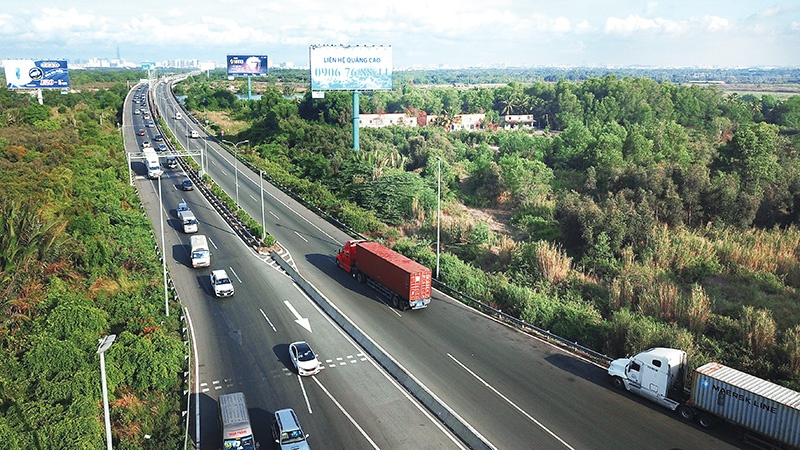While Vietnam’s Law on Public-Private Partnership Investment held high hopes of attracting more private investment inflows into transport infrastructure projects, lowering attraction in the eastern cluster of the North-South Expressway due to legal barriers is narrowing the door for stakeholders in future ventures.
 |
|
When completed, the North-South Expressway will spur the economy, Photo: Le Toan
|
Businesses and investors are concerned about venturing into the second phase of the project’s development for the 2021-2025 period after Minister of Transport Nguyen Van The at a meeting with the National Assembly Standing Committee in mid-December proposed using state funding for all 12 sections.
Tran Chung, chairman of the Vietnamese Association of Road Systems Investors (VARSI), said the proposal means that the playground for private investors will close. VARSI represents dozens of businesses and investors in the field.
“It’s a pity because the government accelerated the building of the Law on Public-Private Partnership Investment to create official legislation to attract investment in the North-South Expressway. Countries worldwide are successful with the model, with South Korea being an outstanding example with 10 out of 15 expressways developed under PPP,” he noted.
Vaibhav Saxena, former co-chairman of the Indian Business Chamber in Vietnam, said that India has widely applied public-private partnership (PPP) for infrastructure in recent decades. “Likewise, the UK has had a lot of experience in successfully implementing PPP projects. The participation of private capital and effective management made it possible to better assess market risks, estimate changes in demand and propose appropriate solutions,” Saxena said.
In Vietnam, private investors are interested in this venture and other key national transport projects, but find it hard to access credit. Developing an enabling capital market is one solution for them.
According to some experts, it is regrettable that the selection of state funding is proposed instead of the build-operate-transfer (BOT) model, but there is no way out. BOT requires state funding, investors’ equity, and bank loans but getting a bank loan remains a big barrier, thus causing risks for such projects to ensure construction schedule.
The tough development of the eastern cluster of the North-South Expressway in the past few years is a reason for the proposal from the Ministry of Transport (MoT). The government initially planned to develop eight sections under the PPP model, and the three remaining ones would be state-funded. However, they failed to attract qualified investors or bank loan guarantees. As a result, five of them were transferred to state funding and, among the three others, two are overdue credit contract signings. Just one initiative, the PPP Cam Lam-Vinh Hao section, has found a financial source.
The MoT estimates that total investment of the project in the 2021-2025 period is nearly $6.39 billion. The ministry notes that the venture will connect Hanoi, Ho Chi Minh City, and 32 cities and provinces, expecting to contribute 65.7 per cent of GDP, and have an influence on activities of 74 per cent of seaports, 75 per cent of economic zones nationwide, while connecting the four major economic regions as well as 16 out of 23 airports.
The 12 sections of the expressway project were planned to have site clearance completed in 2022-2023, and full completion in 2025, which is expected to affect 15,000 households. VARSI chairman Chung said site clearance will be the most challenging part. Over the past few years, investors have not been much inclined towards BOT transport projects in Vietnam, while the number of schemes with financial constraints has increased. According to the MoT, in the 2011-2015 period, around 88 BOT transport projects were implemented, but the number during 2015-2020 was far lower.
Thus far, the Law on Public-Private Partnership Investment has yet to make a major effect on the transport sector. Many shortcomings remain, including inadequacies in policies on the allocation and accounting of loan interests, and problems arising from non-refundable VAT in projects like the road tunnel through Deo Ca, as well as Co Ma, Cu Mong, and Hai Van tunnels.
Vietnam targets that by 2030, the country will successfully complete a system of highways connecting economic and political centres, key economic regions, seaports, and international airports. In addition, around 5,000km of highways would be constructed. The MoT has highlighted 25 road construction projects prioritised for investment in 2021-2025.
Source: VIR